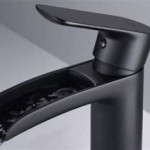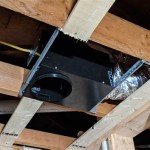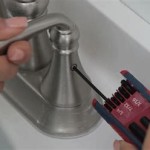How to Fix Low Hot Water Pressure in Your Bathroom Sink
Low hot water pressure in a bathroom sink can be a frustrating inconvenience. It can make simple tasks like washing hands or shaving take longer and be less effective. Understanding the potential causes and implementing systematic troubleshooting steps is essential to resolve this issue efficiently. This article will explore common reasons behind low hot water pressure specifically in a bathroom sink and provide detailed guidance on how to diagnose and rectify the situation.
Several factors can contribute to reduced hot water flow in a bathroom sink. These factors range from simple, localized problems within the sink's plumbing to broader issues affecting the entire hot water system. A thorough examination of each possibility is necessary to pinpoint the root cause.
Identifying Potential Causes of Low Hot Water Pressure
Before attempting any repairs, it's crucial to identify potential reasons for the low hot water pressure. This involves considering several aspects of the plumbing system, from the sink faucet itself to the main water supply.
1. Aerator Clogging: The aerator, located at the tip of the faucet, mixes air into the water stream. Over time, mineral deposits, sediment, and other debris can accumulate in the aerator, restricting water flow. This is a common cause of low pressure in a single faucet and is often the first place to investigate.
2. Supply Line Issues: The hot water supply line that connects the faucet to the hot water shut-off valve can become kinked, twisted, or partially blocked. These obstructions severely impede water flow, resulting in lower pressure. Corrosion within the supply line can also gradually restrict the passage of water.
3. Shut-Off Valve Problems: The hot water shut-off valve beneath the sink controls the flow of hot water to the faucet. It may not be fully open, or it may be partially obstructed by debris or corrosion. A faulty valve can significantly reduce water pressure.
4. Faucet Cartridge or Valve Issues: The faucet cartridge or valve controls the mixing of hot and cold water. If the cartridge is damaged, worn, or clogged with mineral deposits, it can restrict hot water flow. This is more common in older faucets.
5. Water Heater Problems: While low pressure in a single faucet often points to a localized issue, a problem with the water heater itself can also be the culprit. Sediment buildup in the tank, a malfunctioning heating element, or a faulty dip tube can all contribute to reduced hot water pressure throughout the house, including the bathroom sink.
6. Plumbing Issues Elsewhere in the House: If multiple fixtures in the house are experiencing low hot water pressure, the problem may lie in the main water supply line or the hot water distribution system. A leak somewhere in the hot water plumbing system can also cause a drop in pressure at all fixtures.
7. Pressure Regulator Malfunction: The pressure regulator controls the water pressure entering the house from the main water line. If the regulator is malfunctioning and reducing the pressure to a level below normal, it can affect the hot water pressure throughout the house.
8. Municipal Water Supply Issues: In rare cases, low water pressure can be due to problems with the municipal water supply. This is usually a temporary issue, but it can affect all homes connected to the system. Contacting the local water authority is recommended to confirm if this is the issue.
Troubleshooting Steps to Restore Hot Water Pressure
Once the potential causes have been identified, a systematic approach to troubleshooting is necessary. Each step should be performed carefully, and if the problem persists, proceed to the next step until the issue is resolved.
1. Inspect and Clean the Aerator: This is the simplest and most common fix. Unscrew the aerator from the faucet spout using pliers (protect the finish with tape). Disassemble the aerator and clean all the components with a brush and white vinegar to remove mineral deposits. Rinse thoroughly and reassemble the aerator. Reattach it to the faucet and test the water pressure.
2. Check the Hot Water Supply Line: Inspect the hot water supply line under the sink for any kinks, twists, or damage. Straighten any kinks and ensure the line is not compressed or obstructed. If the supply line is old or corroded, consider replacing it with a new one. Flexible supply lines are easier to install and less prone to kinking.
3. Verify the Shut-Off Valve is Fully Open: Ensure the hot water shut-off valve under the sink is fully open. Turn the valve counterclockwise as far as it will go. If the valve is difficult to turn or appears corroded, it may need to be replaced. Before replacing the valve, shut off the main water supply to the house.
4. Examine and Replace the Faucet Cartridge or Valve: If the aerator and supply line are not the issue, the faucet cartridge or valve may be the problem. Consult the faucet manufacturer's instructions for removing and replacing the cartridge or valve. Before replacing the cartridge, shut off the water supply to the faucet. Clean the faucet body thoroughly before installing the new cartridge.
5. Flush the Water Heater: Sediment buildup in the water heater can significantly reduce hot water pressure. Flushing the water heater removes the sediment and can improve water flow. Refer to the water heater manufacturer's instructions for the proper procedure. This process typically involves draining the tank and refilling it with fresh water. Safety precautions should be followed to prevent burns from hot water.
6. Check for Leaks in the Hot Water System: Inspect all visible hot water pipes for leaks, especially in the basement or crawl space. Even a small leak can reduce water pressure. Repair any leaks promptly by patching the pipe or replacing the damaged section. If the leak is not easily accessible, it may be necessary to call a professional plumber.
7. Test Other Fixtures in the House: Check the hot water pressure in other sinks, showers, and appliances. If the low pressure is widespread, the problem likely originates from the water heater or the main water supply. If the low pressure is isolated to the bathroom sink, the issue is likely localized to the sink's plumbing.
Advanced Troubleshooting and When to Call a Professional
If the above troubleshooting steps do not resolve the low hot water pressure, more advanced diagnostics might be needed. This may involve specialized tools and a deeper understanding of plumbing systems.
1. Check the Water Pressure Regulator: If the house has a water pressure regulator, check the pressure setting and ensure it is within the recommended range (typically 40-60 PSI). If the regulator is malfunctioning, it may need to be replaced. This is best done by a qualified plumber.
2. Investigate the Dip Tube in the Water Heater: The dip tube directs cold water to the bottom of the water heater tank. If the dip tube is broken or deteriorated, it can disrupt the flow of hot water and reduce pressure. This requires disconnecting the cold water supply line to the water heater and inspecting the dip tube. This is a more complicated repair that may require professional assistance.
3. Inspect for Galvanized Pipe Issues: Older homes with galvanized steel pipes can experience corrosion and mineral buildup inside the pipes, restricting water flow. This is a common cause of low water pressure in older plumbing systems. Replacing galvanized pipes with copper or PEX piping is a long-term solution, but it is a significant undertaking best left to a professional plumber.
4. Consider a Pressure Booster Pump: If the water pressure from the municipal supply is consistently low, a pressure booster pump can be installed to increase the pressure. This pump is installed on the main water line and boosts the pressure to a desirable level. Installing a pressure booster pump requires electrical and plumbing knowledge and is best done by a licensed professional.
When to call a Professional Plumber:
- If the homeowner is uncomfortable working with plumbing or electrical systems.
- If the problem is complex or difficult to diagnose.
- If the homeowner suspects a serious plumbing issue, such as a leak in the wall or foundation.
- If the homeowner lacks the necessary tools or expertise to perform the repairs.
- If the problem persists after attempting the troubleshooting steps outlined above.
Engaging a qualified plumber can save time and prevent further damage to the plumbing system. A professional plumber has the experience, tools, and knowledge to accurately diagnose the problem and implement the appropriate solution. They can also ensure that all repairs are done safely and in compliance with local plumbing codes.

Easy Fix For Low Water Pressure In Kitchen Sink Or Bathroom

4 Ways To Adjust Faucet Water Pressure Wikihow

Why Does My Sink Faucet Have Poor Pressure On Only One Side Clogged

How To Fix Low Water Pressure Taps And Shower Head

How To Fix Low Water Pressure Taps And Shower Head

Troubleshooting Faucet Hot Water Low Pressure Flow Problem

How To Fix Low Water Pressure Boilers Showers And Sinks Checkatrade

4 Common Reasons Your Bathroom Water Pressure Is Low Reichelt Plumbing

12 Solutions To Poor Water Pressure 3 Root Causes

Why Would My Water Pressure Suddenly Be Low In House
Related Posts







